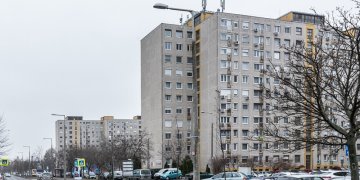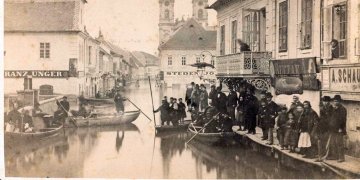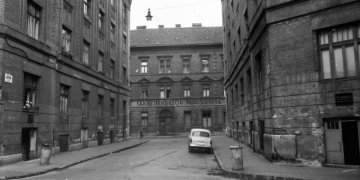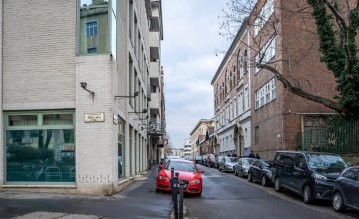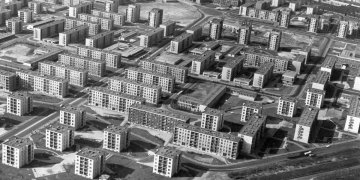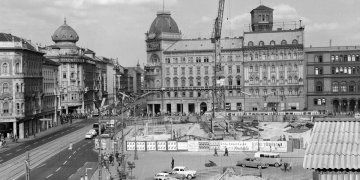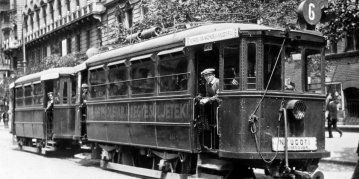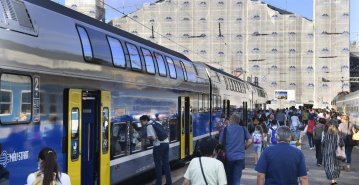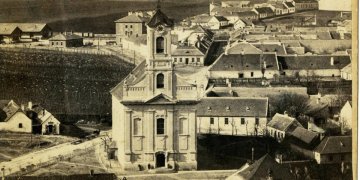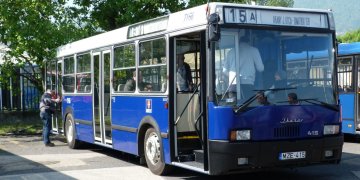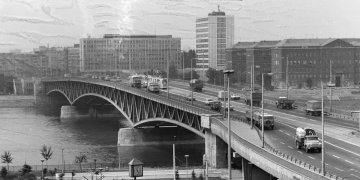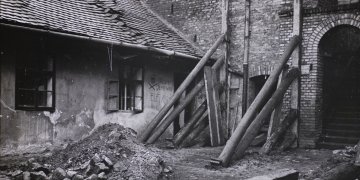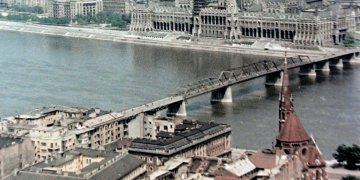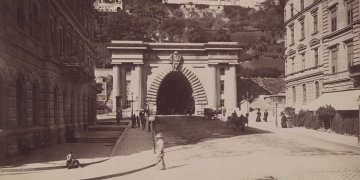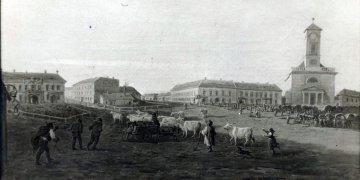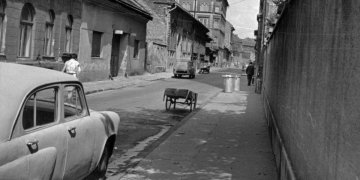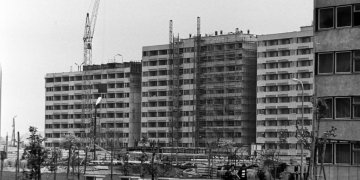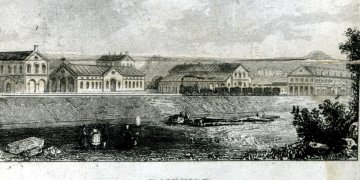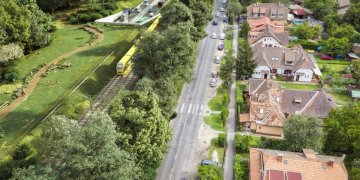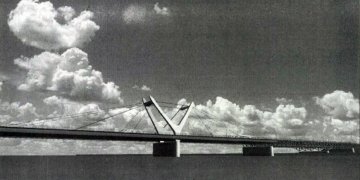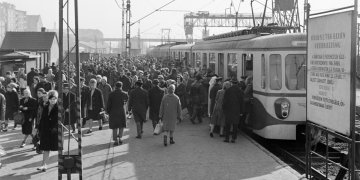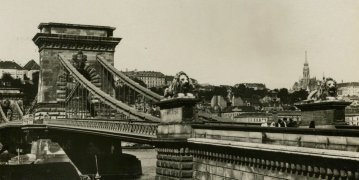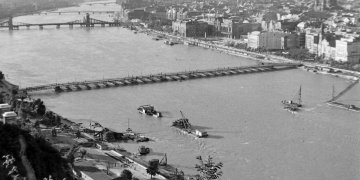
Domonkos Csaba
Cikkek
Construction of Gazdagrét confirmed 40 years ago
March 10, 2021 at 9:00 AM
Gazdagrét is unique among the housing estates in Budapest. Located in the Buda hills, the area has clear borders and remains a popular place to live today. A popular soap opera followed its life for years.
New bridges in Budapest
March 8, 2021 at 9:00 AM
PestBuda has reported on the largest railway development, the Southern Ring Railway, currently underway in Budapest several times. Recently, new renders appeared of an important element of the railway line, a new bridge. Take a look.
The flood of 1876 – Devastation in Buda and Pest
February 28, 2021 at 9:00 AM
The flood of 1838 is part of our collective memory; everyone in Budapest has heard of it. However, it was not the last major flood that wreaked havoc in the capital. In 1876, 145 years ago, the river flooded, mainly damaging Buda but causing houses to collapse in Pest. Today, Budapest is safe from floods, which is mainly thanks to our ancestors' efforts in the 19th century.
Fifty years ago, humans weren’t the most numerous inhabitants of Budapest
February 26, 2021 at 9:00 AM
Rats are one of the most unpopular animals. However, they are also dangerous as they spread countless diseases. In the past, every big city was teeming with these rodents, and even today, only a few can say they are almost rat-free. Budapest is one of them.
A street in Buda and a mountain in Australia – Who was Tadeusz Kościuszko?
February 23, 2021 at 11:30 AM
Kosciuszko Tádé Street in the 1st District is generally well-known. However, few people know who the person behind the name was and why the street known as Koronaőr Street before 1948 was renamed in his honour. However, the hero of Polish independence, Tadeusz Kościuszko, born 275 years ago, was so well known in his day that in addition to a street in Buda, the highest mountain in Australia was named after him, and his statue was even erected in Washington.
The first panel building in Budapest was completed sixty years ago – A new era began next to Üllői Road
February 18, 2021 at 11:30 AM
In Hungary, a housing shortage defined the 1950s. Due to forced industrialization, thousands moved to the cities, chiefly Budapest and the newly created idealistic cities. However, there was not enough vacant housing in these cities. The communist government believed industrialised house construction to be the solution. As a result, the first panel building in Budapest was completed on the József Attila Housing Estate sixty years ago.
A blast connected the two tunnels – Tunnels of M2 metro completed 60 years ago
February 16, 2021 at 9:00 AM
Building a metro was no easy feat in 1960s Budapest. During the construction of the M2 line, workers battled liquefied sand and groundwater but also found interesting artefacts, such as the skeleton of a Rhinoceros and a mammoth tooth. The large-scale development project also demanded some sacrifices. The building of the National Theatre was destroyed, and Rókus Hospital almost collapsed – though the latter was eventually saved. The tunnels were built from two different directions. The section built from Keleti Railway Station was connected to another built from Blaha Lujza Square with explosives sixty years ago.
Where the No. 6 stops – The trams of Budapest have been numbered for 111 years
February 12, 2021 at 11:00 AM
For the modern commuter, the fact that trams and buses have numbers is obvious – but this was not always the case. In fact, numbers first appeared on trams in Budapest in 1910. Even the system's introduction had its bumps as trams often turned in different directions than what their number would have suggested, meaning not only passengers but drivers and conductors had to get used to the new solution.
City of the Future – Railway development connects new areas to city centre
February 8, 2021 at 11:00 AM
What will Budapest look like in 20 years? According to current urban development efforts, the air will be much cleaner, the underground, suburban railways and rail services will be connected. Commuters will happily board clean, on-time and frequent trains to get to work from the outer parts of Budapest and towns in the agglomeration. Sixteen new railway stations will be built to support this purpose, while huge areas once used by the railway may be rehabilitated and handed over for residential use. At least this is what the newly completed Budapest Agglomeration Railway Strategy says.
Cut in half and expanded – The not so everyday history of a Church
February 4, 2021 at 8:30 AM
There is an almost average 18th-century church, the history of which is much more exciting than its simple yellow walls would suggest. It was once cut in two and expanded – and it also served as the venue of a famous wedding 185 years ago. The happy couple were not everyday people. The bride was the widow of Károly Zichy, and the groom was István Széchenyi.
Another Icarus retires – The 415 family never became popular in Budapest
February 1, 2021 at 9:00 AM
Budapest has just bidden farewell to another bus type: the last Ikarus 415 was recently retired from service. The model appeared in Budapest in 1987 but never became dominant, even though the factory had planned to replace the classic 200 series with the new design. Rather, its role was similar to a substitute player: rarely allowed to shine.
Changes planned for the area around Buda bridgehead of Petőfi Bridge
January 26, 2021 at 11:00 AM
Goldmann György Square in the 11th District will be completely transformed. The university is planning to construct new buildings in place of the V2 building and the canteen that have stood empty for years. A zero-emission research centre has been planned for the site. Dive into the history of this unique site with PestBuda!
A bridge of legends – Mythbusting the stories about Chain Bridge
January 23, 2021 at 3:00 PM
The lions have always had tongues, and the bridge is not a copy of another structure in England, not was it named after Széchenyi in 1899. There are several urban legends about Budapest’s oldest permanent river crossing, and some have even made their way into professional writing, despite being untrue. Join Pestbuda on an adventure to separate fact from fiction and uncover unique facts about this outstanding, unparalleled structure in Budapest, Chain Bridge.
Landslide in Buda: cracked walls and sunken villas lined Castle Hill
January 21, 2021 at 9:00 AM
In January 1936 the earth began to move in Buda. But it was not an earthquake but a landslide. The western slope of Castle Hill began to slide. Roads sank, houses cracked, many homes had to be abandoned. The hill’s movement lasted for months and was eventually stopped in the Autumn. Several houses were demolished due to the disaster.
A forgotten bridge on the Danube – Many forget the second road bridge under construction in Budapest
January 19, 2021 at 9:00 AM
Two bridges are being built as part of the Galvani Bridge development project. The cable-stayed structure spanning the main Danube branch has been discussed in detail but the other bridge planned to cross the Soroksár branch of the river has almost been forgotten, despite being a major and beautiful piece of infrastructure.
The eight-month miracle – Kossuth Bridge completed from scraps 75 years ago
January 10, 2021 at 12:00 PM
Previous articles on PestBuda have detailed how the retreating German forces destroyed all Danube bridges in Budapest. After the war, a series of temporary structures were erected to connect the battle-torn city’s two halves. However, it was obvious that a somewhat permanent structure would be needed. The result was Kossuth Bridge.
A funeral gave life to the bridge that created Budapest
January 7, 2021 at 9:00 AM
Two hundred years ago, a younger Hungarian hussar officer made a rather reckless statement to a friend. His words had many consequences and changed the lives of many forever. The officer, in fact, was only in a hurry to reach his father's funeral.
A dream of the Reform Period – A tunnel to run through Castle Hill
January 5, 2021 at 3:00 PM
Even when building Chainbridge the builders knew, the Buda bridgehead is in the wrong place, a point which is difficult to reach with a cart or carriage. A solution was needed, but Castle Hill stood in the way. Eventually, a company was founded to break through the hill 175 years ago.
Leopold Rottenbiller – Three-term Lord Mayor of Pest
January 3, 2021 at 3:00 PM
Leopold Rottenbiller is one of the most unjustly forgotten politicians of Budapest's history, even though a major road bears the name of the urban leader to this day. He served as the Lord Mayor of Pest for three terms, and not in periods of growth, construction and peace. Despite this, Rottenbiller kept the city working. His second term began 160 years ago.
Fifty years ago large-scale plans to redesign Józsefváros were born
December 30, 2020 at 9:00 AM
Various plans to redesign the inner sections of Józsefváros and replace the out-dated kitchen and room flats built at the end of the 19th century were floated decades ago. Fifty years ago the Budapest Council adopted a large-scale plan to demolish 3,400 flats. By the time the district already had mixed experiences of how the city centre could be rehabilitated.
When panel housing defined urban development
December 23, 2020 at 10:00 AM
Forty-five years ago, in the last days of 1975, a new urban planning regulation was adopted in Budapest. The purpose of the provision was to provide an appropriate framework for the construction or housing estates and urban development, while also designating development zones and the number of buildings to be erected.
A train to the imperial city – Budapest–Vienna train line opened in 1850
December 20, 2020 at 9:00 AM
1850 was a dark year for Hungary. After the war of independence was lost, so was freedom. Haynau's reign of terror through thousands into prison. But in 1850 a dream came true. A rail connection was completed between Pest and Vienna reached.
"Not on the surface, not in a ditch, or in a tunnel" – Residents protest proposed Pest access roads to Galvani Bridge
December 17, 2020 at 10:00 AM
A petition for the protection of Kiserdő, along Határ Road, was recently taken to the Mayor of Budapest by local NGOs. The petition protests the planned access road leading to Galvani Bridge on the Pest bank of the river.
New bridge may be built near Aquincum
December 9, 2020 at 10:00 AM
The Budapest Transport Centre has begun preparations for the construction of a new bridge which would connect Aquincum in Óbuda with Újpest.
Phone lines once defined the Budapest real estate market
December 7, 2020 at 10:00 AM
Life today is unimaginable without a phone, yet not so long ago people could wait decades for a connection to be brought to their flat. Those who had landlines could consider themselves privilege, and those selling flats with one could ask a higher price. Thirty years ago, a new telephone exchange in Csepel with 18,000 lines was a huge step forward. Nevertheless, it seemed that it would only be possible to connect half of the flats in the city with phone lines by 2000.
Fifty years since the new trains arrived some are still in use on suburban railway lines
December 2, 2020 at 10:00 AM
Over the last few days, a number of articles have surfaced regarding the two companies that remain in competition to provide the new trains for the suburban railway lines. The new vehicles are much needed, as most of the current trains were bought in the 1970s. The oldest of them has been in use on the Csepel line for 55 years.
A Tu-154 aircraft first visited Budapest 50 years ago
November 29, 2020 at 10:00 AM
The introduction of a new type of aircraft has always been a great sensation in Budapest. It was no different when the most modern passenger aircraft of the time, a product the Soviet aviation industry, the Tu-154, arrived in the city 50 years ago.
The new Chain Bridge opened 105 years ago
November 27, 2020 at 10:00 AM
The Chain Bridge, as seen today, is not the structure that István Széchenyi dreamed of and which was built to the plans of William Tierney Clark. The Chain Bridge we love and use today is 105 years old and was opened on 27 November 1915.
Motorised Tricycles – A new postal service arose 120 ears ago
November 25, 2020 at 9:00 AM
The Hungarian Postal Service played a central role in the motorisation of Hungary. The company first began using foreign vehicles, but 120 years ago, the first Hungarian-made vehicles entered into service. These early attempts were not even cars, but motorised tricycles, powered by Hungarian internal combustion engines.
Böske Bridge – The story of Petőfi Pontoon Bridge
November 20, 2020 at 9:00 AM
Following the devastation of World War II a series of temporary bridges were constructed in Budapest to ensure movement around the city. One of these was the Petőfi Pontoon Bridge, which was named after the fact that it connected Petőfi Square in Pest, with Döbrentei Square in Buda, not far from the ruins of Erzsébet Bridge. However, the population quickly became to use the slightly more ingenious name, Böske Bridge, Böske being a common Hungarian nickname for Erzsébet or Elizabeth. The name Petőfi Bridge was later inherited by a completely different structure.

